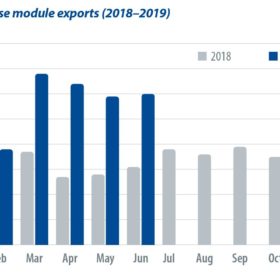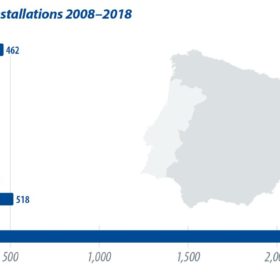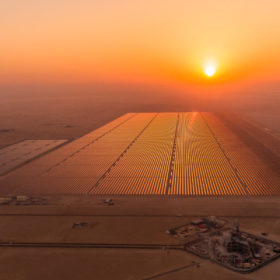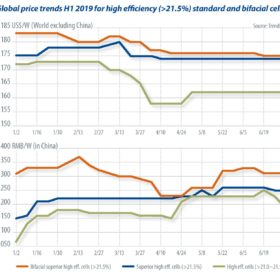Export analysis
PV InfoLink analyzed the key markets of China’s big module manufacturers, as well as product trends, based on export statistics. According to trade figures, the nation’s module exports totaled 34.2 GW in the first half of 2019, up by more than 90% from the corresponding period of 2018. In a nutshell, overseas demand has been strong in 2019.
Political uncertainties and market speculation
After several years of stagnation, Spain has started to see a revival in its PV market, writes IHS Markit’s Maria Chea. The country’s newfound growth has been due to a combination of tender and private PPA projects, along with decreasing component costs.
The race has only just begun
The Australian utility-scale PV and wind industries have just gone through a record two years of construction and commissioning. More specifically, writes Rystad Energy’s David Dixon, utility-scale PV has transformed from a megawatt-scale market to one measured in gigawatts. The resultant boom in utility-scale PV in the country has attracted developers, EPCs and OEMs, from at home and across the globe.
Only with hydrogen can we save the climate
There is no alternative to using hydrogen for climate protection. Climate change and its ensuing measures require a lot of effort, money, and above all the right solutions. Therefore, a meaningful project, which will be perceived worldwide as a model for complete technological change, is key. That is what the Bonn Climate Project and the CTC Bonn stand for! We can already see great steps towards a hydrogen economy being taken in Germany. Steps are good, but not enough; we need the implementation of a hydrogen economy now!
All that solar jazz
As 2019 enters its final quarter, the solar industry continues to face headwinds, even as the markets for solar deployment in Europe, the United States, and Australia remain strong. Paula Mints of SPV Market Research takes us through what to expect up until 2021.
PERC cells: From shortage to surplus
After the “June rush” to complete solar projects in China – as well as the commissioning rush in Vietnam, which saw higher-than-expected demand of 4 GW in the first half – the growth of the regional solar market started to slow down in July and August, before anticipated Chinese demand picks up the slack again. With unexpectedly low demand in the third quarter, module manufacturers reacted first by marginally reducing utilization rates. Cell producers then cut production after cell prices collapsed.
Safety is paramount
When Sony first commercially introduced lithium-ion batteries in 1991, the industry recognized their potential to revolutionize portable electronics. Ever since, there have been countless efforts to improve the technology, with many researchers focusing on energy density and longevity, in line with demand from emerging applications such as electric vehicles (EVs) and on-grid energy storage. Julian Jansen and Youmin Rong of IHS Markit discuss the effect of safety concerns on this rapidly growing global market.
Maximize the benefits of solar energy through techno-ecological synergies
The dire assessment from the International Panel on Climate Change (IPCC) made it very clear this past year: To avoid the worst impacts of the climate crisis, a significant shift to clean energy sources must be well underway by 2030.
Tendency toward diversification
Looking back at the PV market in 2018, micro module technologies started maturing in development and moving on to mass production, writes TrendForce analyst Lions Shih. Modules are no longer limited to a single design as before, but rather continuing on the path toward diversification in 2019. The situation is spreading into other areas, as may be seen in the upstream silicon wafer and cell segments.
Distributed generation growing in Latin America
In the early years of the 21st century, distributed generation systems in Latin America were mainly installed off-grid in remote rural areas, writes Maria Chea, solar analyst at IHS Markit. As the El Niño phenomenon and high oil prices continued to exacerbate high electricity prices and power shortages, governments began to turn their attention to distributed generation, including PV systems, to assuage strains on their national grid networks.










